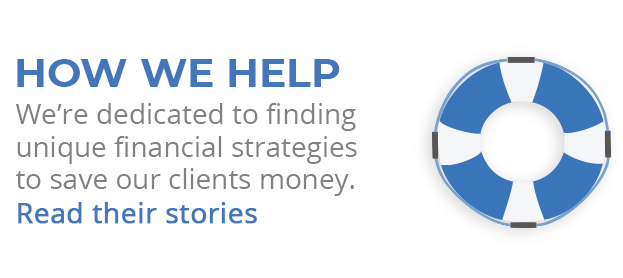Should your refund be saved? According to a TD Ameritrade poll, 47% of U.S. taxpayers expect a refund this year. What do they plan to do with the money?
The answers may surprise you. While 15% of the survey respondents indicated they would spend their refunds on discretionary purchases, 47% said they would save the money and 44% indicated they would use some or all of it to whittle away some debt. Just 15% said they would invest it, and only 6% said they would direct it to a charity.
Besides deposit accounts, consider other destinations. Putting your refund into your savings or checking account is sensible enough – but with the interest rates most bank accounts earn today, you may be wondering about alternatives. Here are some other options.
Your refund could let you put more money into your workplace retirement plan. Does your employer offer to match your retirement plan contributions? If so, you might want to think about contacting your plan administrator or human resources officer and increasing your elective salary deferrals into the retirement plan this year by the same amount as the refund. If you deposit those refund dollars in a checking or savings account, you can offset the increase in the amount of salary you defer by distributing the refund dollars from the bank account to yourself. Hopefully, that checking or savings account generates at least some interest on those deposited funds as well.
It could help you increase your 2012 (or 2013) IRA contribution. If you didn’t make the maximum allowable IRA contribution for 2012 – $5,000 across all of your traditional and Roth IRAs, $6,000 for those 50 or older – you could boost that contribution as a byproduct of your refund.
Assuming you haven’t sent your 2012 federal return to the IRS yet, you can redo your taxes to show your 2012 IRA contribution(s) raised by the amount of the refund you will be getting. As the deadline for 2012 contributions is April 15, 2013, you could either make your additional 2012 IRA contribution using your refund (if you file early and get your refund back nice and early) or with equivalent cash from your savings or checking account, knowing that you will then use the refund to reimburse yourself. Whatever way you choose, please make sure that you earmark your additional contribution for the year 2012; otherwise, the IRA custodian will interpret it as a contribution for this year. (If you’ve already sent your 2012 taxes to the IRS, you could still pull this off with the help of a 1040X form to amend your return).
Another option: use the refund you get from your 2012 taxes to increase your 2013 IRA contribution.
You could tell the IRS to put the money in bonds. Starting in 2011, the IRS gave taxpayers who received refunds a third option: in addition to a direct deposit or a check in the mail, their refunds could be redirected into U.S. Series I Savings Bonds. Up to $5,000 of refund dollars can be invested this way (in multiples of $50).
You could use the dollars for home improvement. If you want to go green (or even greener) and you have the time, initiative and patience to tackle an energy-efficient home improvement project, here is another option. You could get as much as a $500 tax credit for your effort.
You could make an additional mortgage payment or pay property tax. Assuming your home isn’t underwater, you may want to use the refund dollars to reduce mortgage principal. Also, mortgage companies often keep a few thousand bucks in escrow to pay various tax and insurance expenses linked to your home, and some of them will actually let a borrower’s savings account stand in for their escrow account. If they permit, you could make such payments out of an account of your own while it earns a (tiny) bit of interest.
Lastly, think about avoiding a refund in 2013. In figurative terms, your federal tax refund amounts to an interest-free loan to Uncle Sam. If you don’t particularly want to make that “loan” again, see if your W-4 can be tweaked to decrease that possibility this year.

About the Independent Financial Advisor
Robert Pagliarini, PhD, CFP®, EA has helped clients across the United States manage, grow, and preserve their wealth for the past 25 years. His goal is to provide comprehensive financial, investment, and tax advice in a way that was honest and ethical. In addition, he is a CFP® Board Ambassador, one of only 50 in the country, and a real fiduciary. In his spare time, he writes personal finance books, finance articles for Forbes and develops email and video financial courses to help educate others. With decades of experience as a financial advisor, the media often calls on him for his expertise. Contact Robert today to learn more about his financial planning services.










